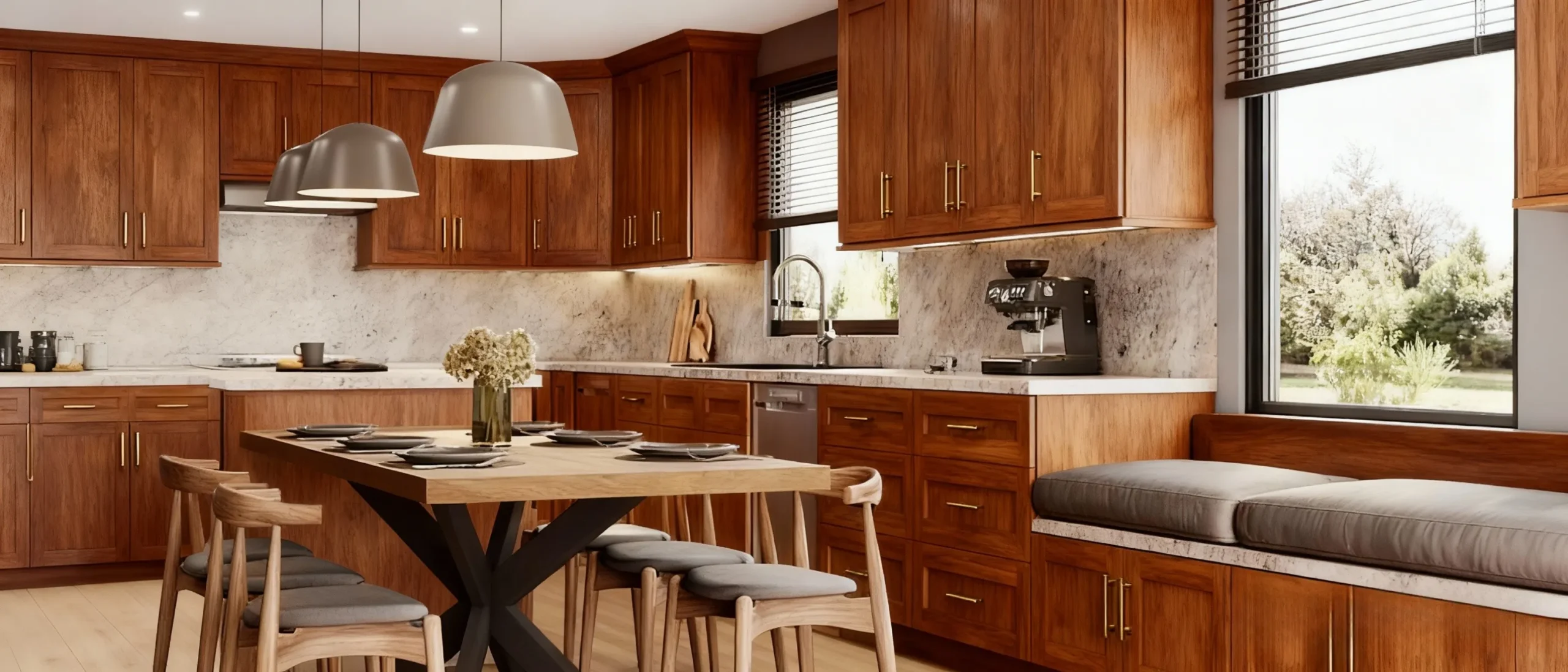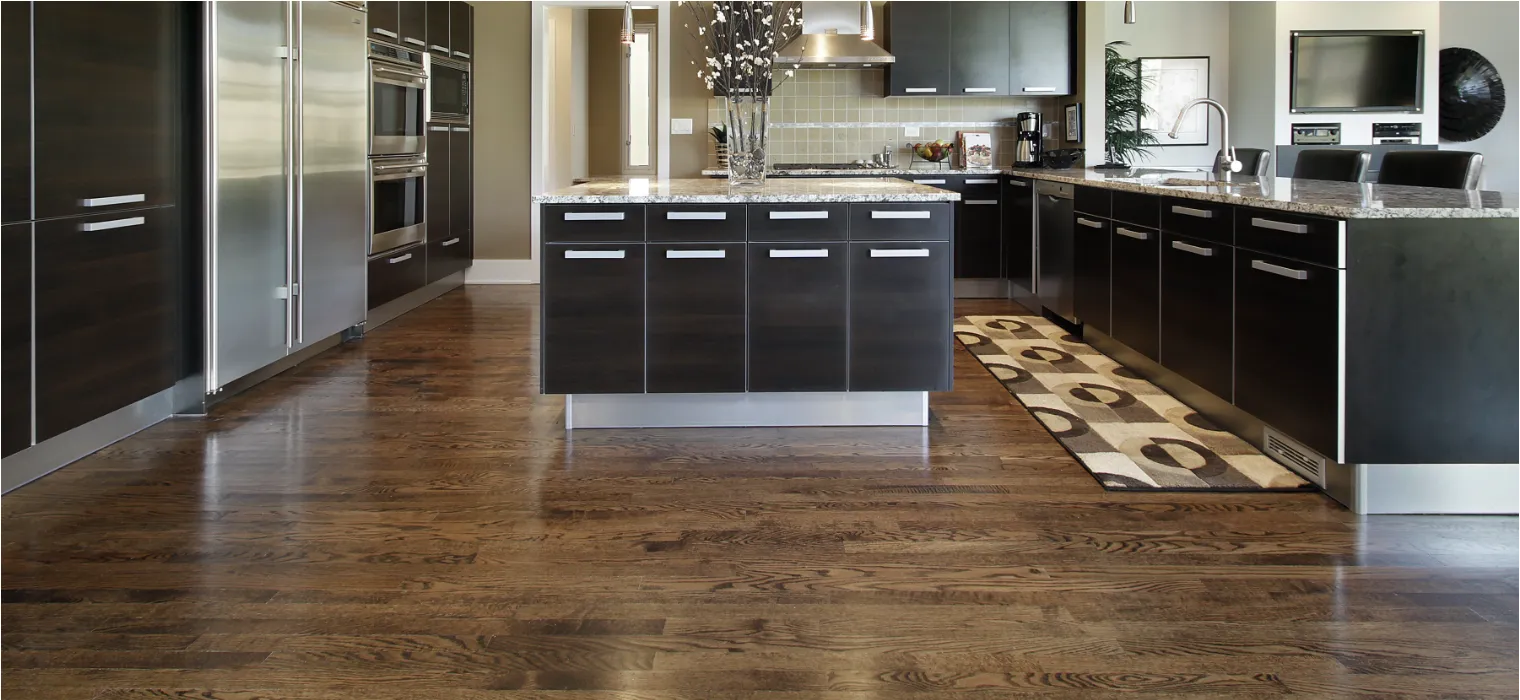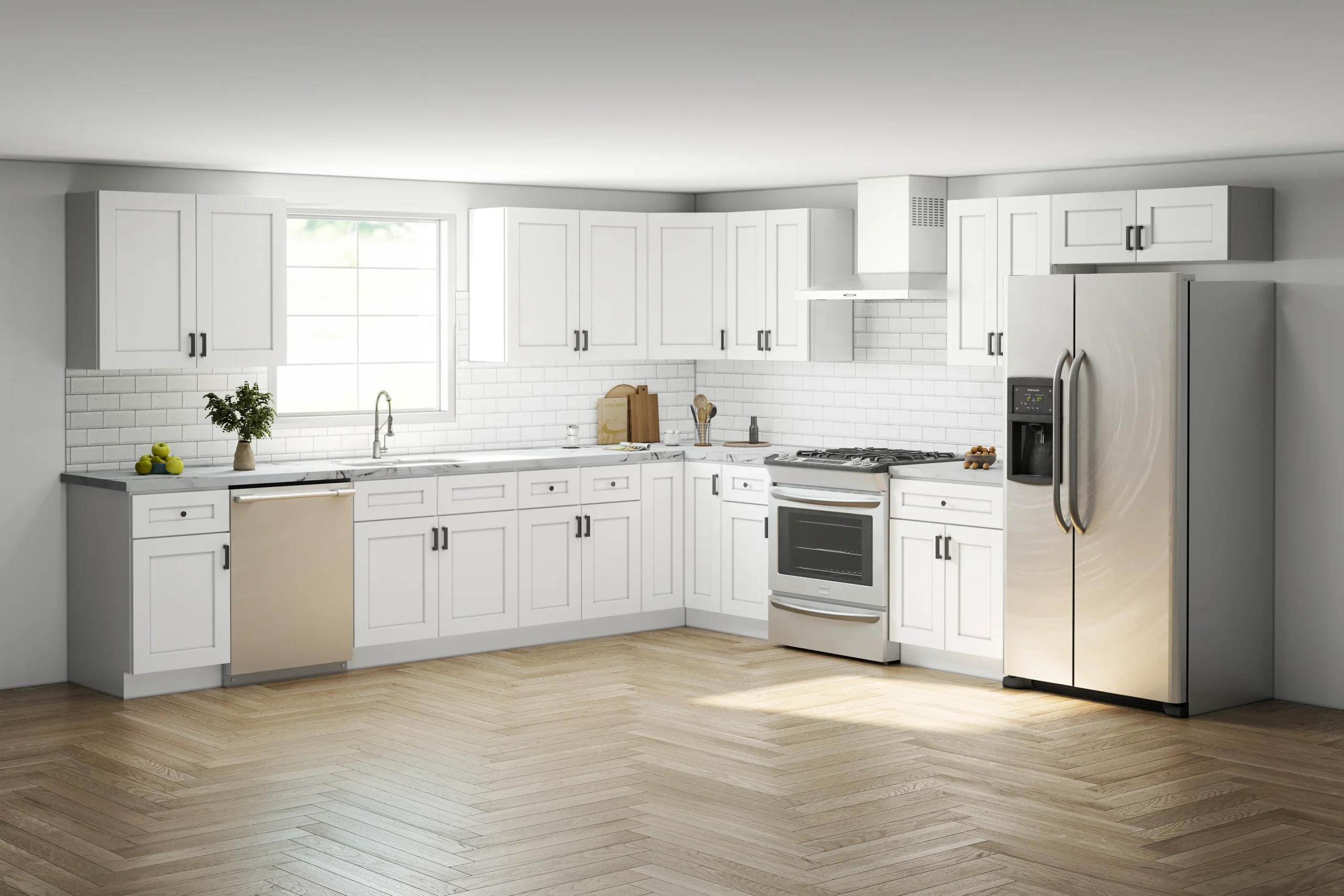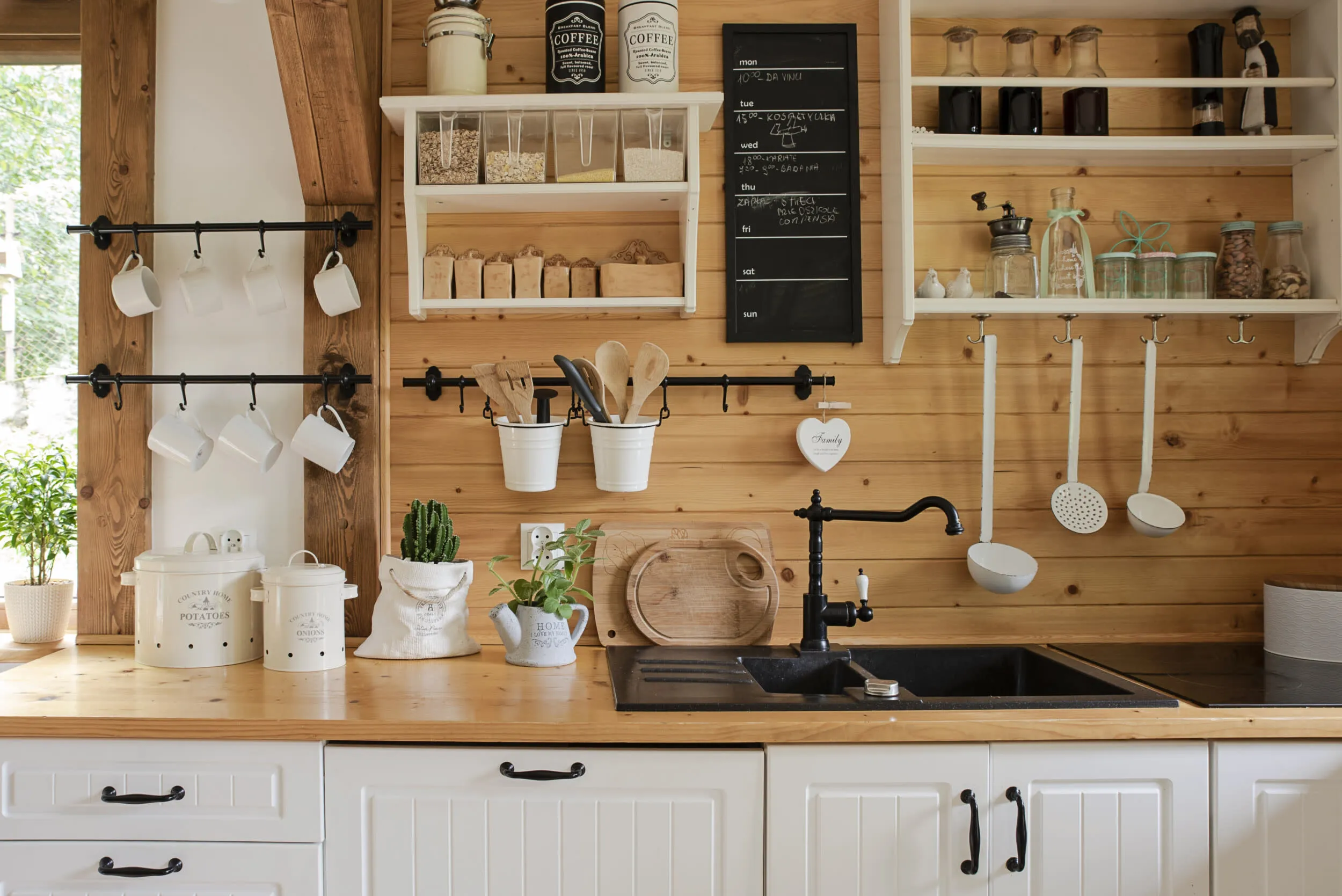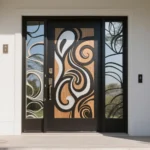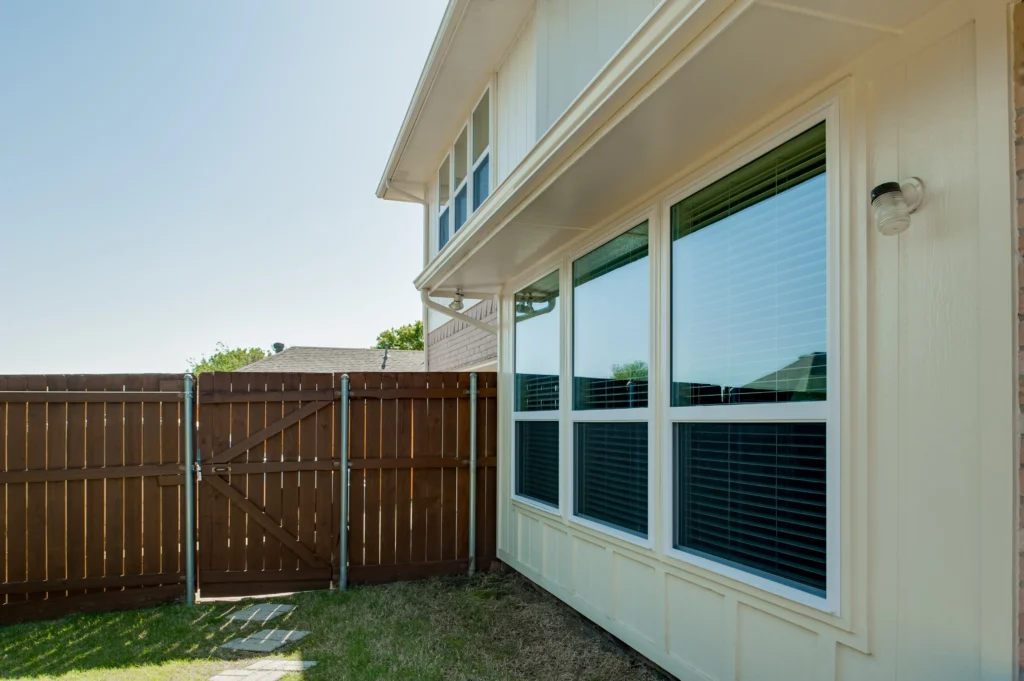
Too many size codes. Too many frame choices. Fear of leaks, drafts, or wrong orders. This guide turns that stress into a clear plan you can follow.
A 48×48 window equals 4×4 feet. Pick your frame by climate and maintenance. Choose glass by U-factor and SHGC. Confirm rough opening and egress with local code. Price the full job: unit, install, trim, and haul-away.
You want answers you can use in a store or at a jobsite. Below, each question gives a fast answer first, then deeper rules with simple tables and checklists.
What is a 48×48 window called?
People say “48×48,” “4×4,” or “4-ft by 4-ft.” All mean the same nominal size. It describes the unit’s width by height, not the glass size. Naming can vary by brand and region.
Use “48×48” when you ask for quotes. Add the operation type if you know it: slider, casement, double-hung, or fixed. Ask the rep to confirm whether their numbers are unit size, call size, or rough opening.
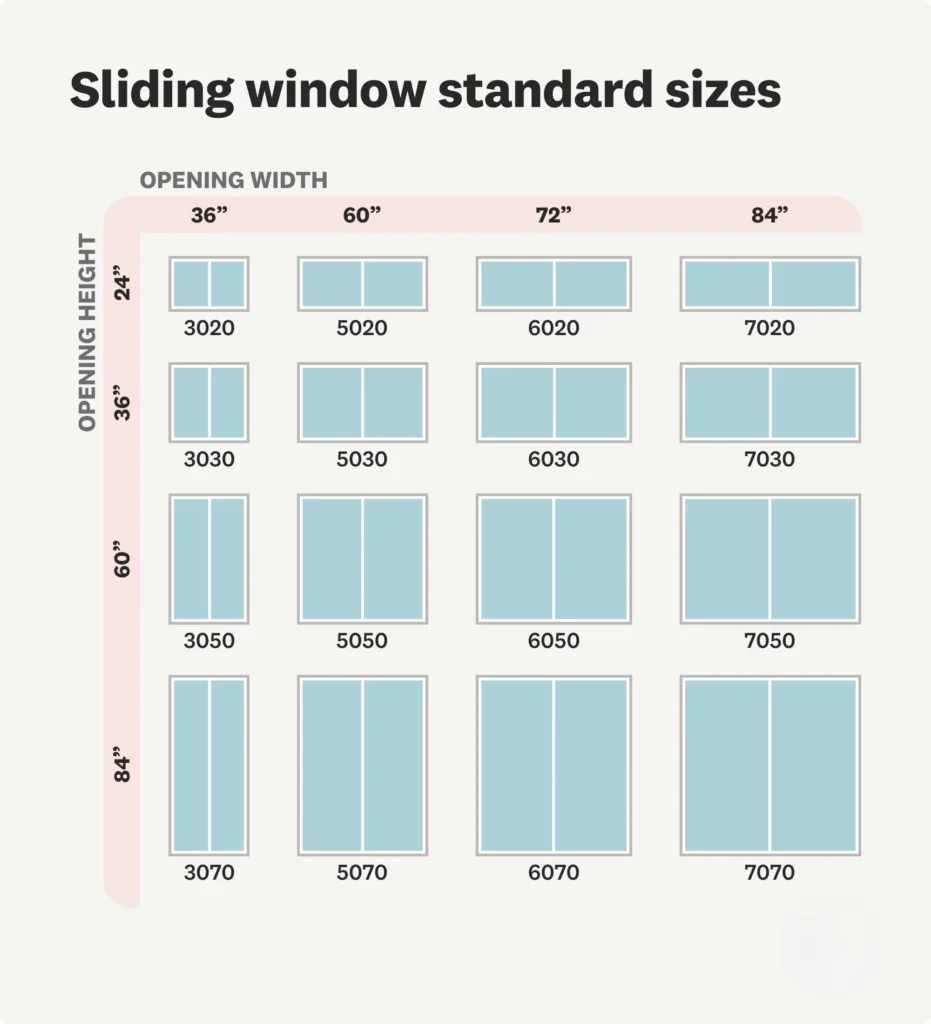
Naming basics
| Term | What it means | Example |
| Unit size / Call size | The labeled size of the window | 48×48 (nominal) |
| Visible glass | The see-through area | Smaller than unit size |
| Rough opening (RO) | Framed hole in the wall | Slightly larger than unit |
| Net frame | Outside-to-outside frame size | Often just under unit size |
Quick tips
- Always write W×H.
- Ask for a spec sheet that lists unit, frame, and RO.
- Photograph the label on the box for later reference.
Is 48×48 a standard window size?
Yes in many product lines. You can find 48×48 in sliders, fixed, and some casements or double-hung units. Some brands treat it as stock; others make it to order.
Buy standard when timelines and budgets are tight. Go custom for special colors, grids, or impact glass. Expect longer lead times for custom finishes or triple-pane glass.
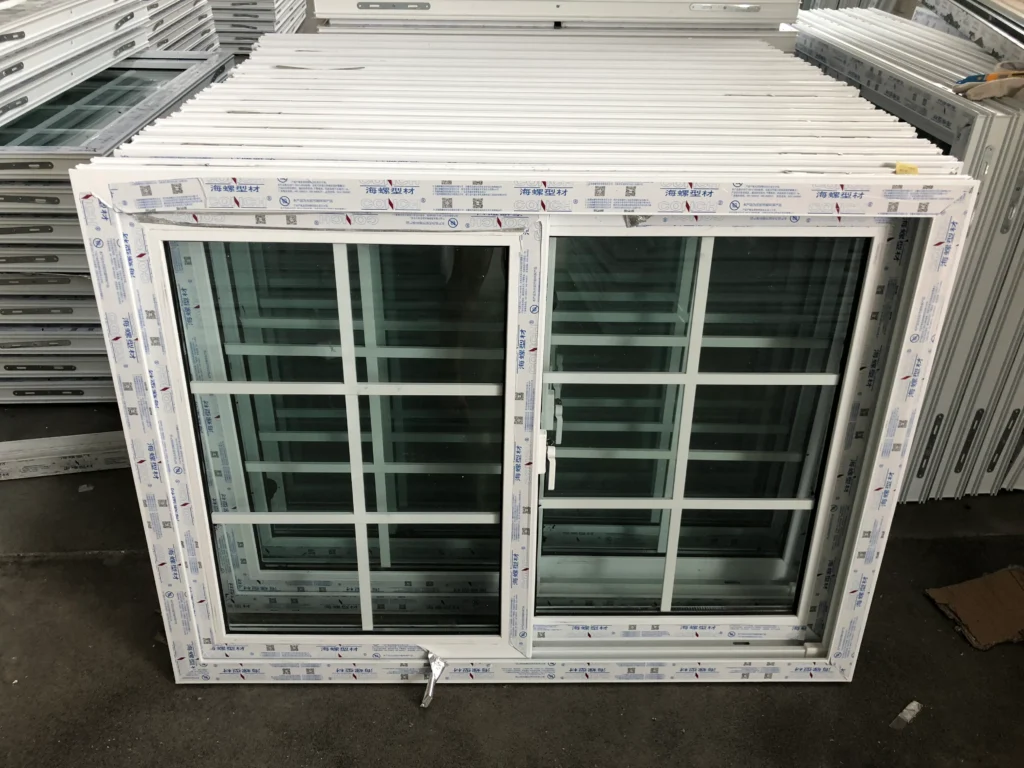
Standard vs custom
| Option | Lead time | Cost | When to choose |
| Standard stock | Fast | Lower | Rentals, flips, basic replacements |
| Standard made-to-order | Moderate | Mid | Need common size with certain options |
| Custom size/finish | Longer | Higher | Exact fit, color, or special glass |
Watch-outs
- “Standard” still varies by region.
- Some operations are not offered at 48×48.
- Check maximum sizes for sliders, casements, and hungs.
What rough opening fits a 48×48 window?
Most rough openings run about ½ inch wider and taller than the unit, but always follow the manufacturer’s sheet. The rough opening must be plumb, level, and square.
Frame the opening, then measure diagonals. If they differ, your hole is out of square. Fix that before delivery. Good framing speeds install and keeps gaps even for insulation.
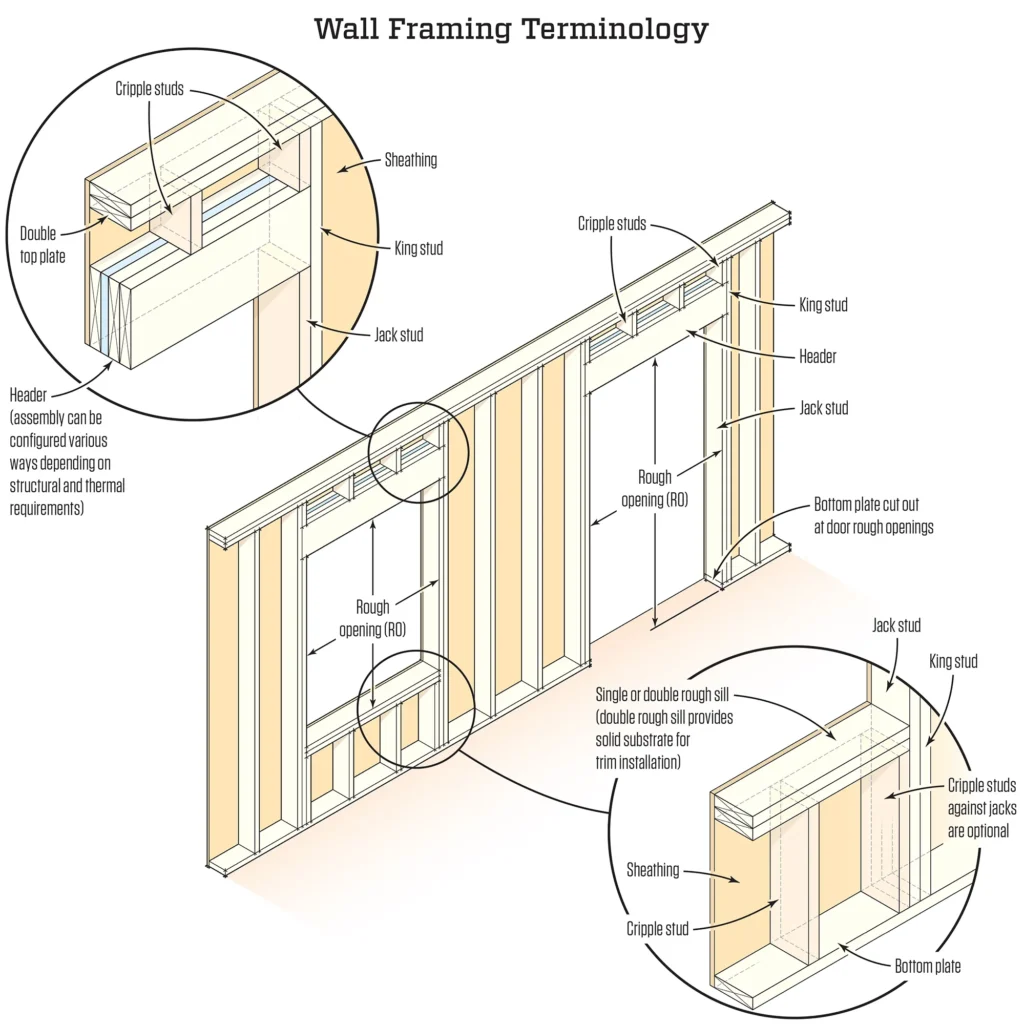
Typical planning (confirm with spec)
| Labeled unit | Common RO target | Notes |
| 48×48 | ~48½″ × 48½″ | Shim space around unit |
| 48×48 nail-fin | Check brand sheet | Fin placement changes RO |
| Replacement insert | Based on frame size | No new RO; fit existing frame |
Framing checklist
- King and jack studs straight and tight.
- Header sized for span.
- Sill level; add sill pan or flashing.
- Sheathing intact for proper flashing.
How much does a 4×4 window cost in 2025?
Window cost has three parts: the unit, the install, and finish work. Vinyl units cost less than fiberglass or wood. Sliders often cost less than casements. Energy options and color add money.
Expect a wide range depending on market and options. Ask for a line-item quote: unit price, labor, trim, haul-away, permit, and disposal. This helps you compare apples to apples.
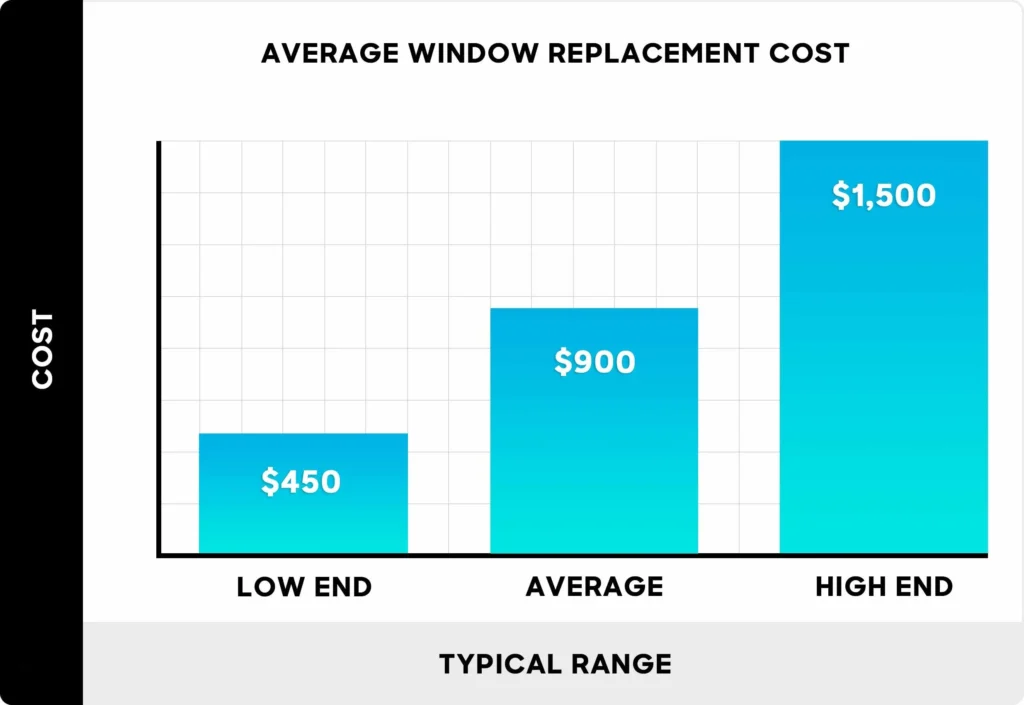
Typical ranges (indicative)
| Frame & Type | Unit only | Installed | Notes |
| Vinyl fixed 48×48 | Low–mid $$ | Mid $$ | Cheapest, no ventilation |
| Vinyl slider 48×48 | Mid $$ | Mid–high $$ | Good airflow; common choice |
| Vinyl casement 48×48 | Mid–high $$ | High $$ | Great seal; more hardware |
| Aluminum slider 48×48 | Mid $$ | Mid–high $$ | Strong frame; check condensation |
| Fiberglass 48×48 | High $$ | Higher $$ | Stable, long life |
| Wood clad 48×48 | High $$ | Higher $$ | Warm look; more care |
*Dollar signs indicate relative tiers to keep guidance broad. Request local quotes for exact numbers.
Cost drivers to watch
- Color/laminate; black costs more than white.
- Triple-pane, laminated, or impact glass.
- Exterior trim, interior casing, drywall repair.
- Second-story access or complex removal.
Vinyl or aluminum: which frame suits 48×48 best?
Vinyl insulates well and needs little care. Aluminum is strong and slim but can conduct heat. Modern thermal breaks help. Choose by climate, look, and budget.
Pick vinyl for cold or mixed climates and easy upkeep. Pick aluminum where slim sightlines matter, or in warm, dry regions. In humid coasts, confirm coatings and fasteners rated for your salt zone.
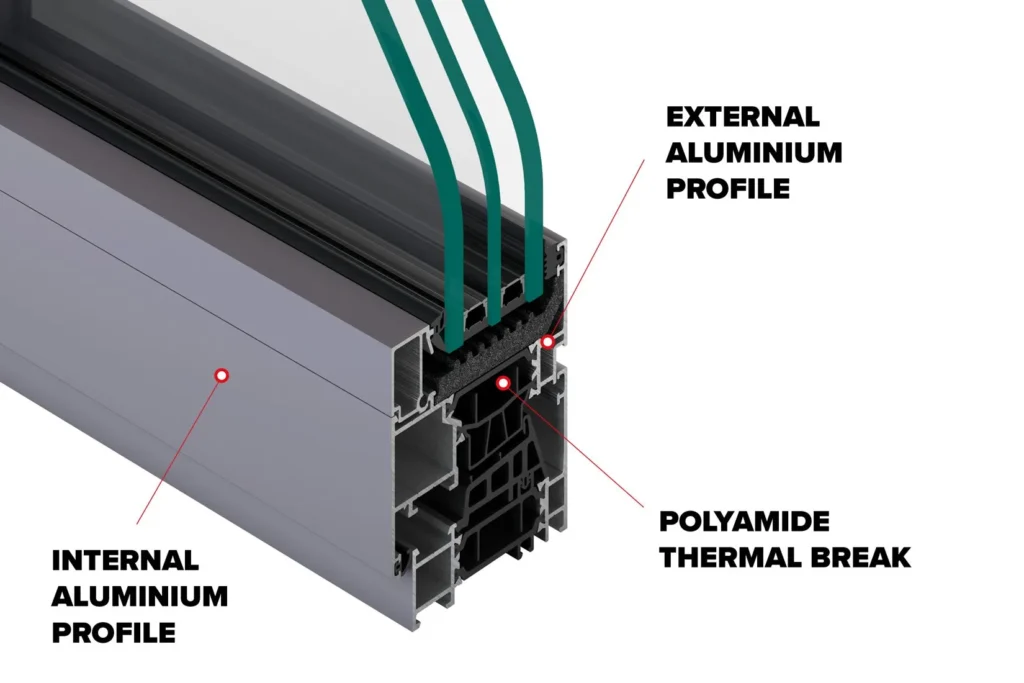
Frame comparison
| Factor | Vinyl | Aluminum (thermal break) |
| Insulation | Better by default | Needs thermal break |
| Sightlines | Thicker | Slimmer, modern |
| Maintenance | Low | Low with good finish |
| Color options | Improving, still limited | Wide, includes dark |
| Cost | Lower–mid | Mid–higher |
| Climate fit | Mixed/cold | Warm/dry; coastal with care |
Decision tips
- Touch the sample in sunlit showrooms; feel heat transfer.
- Ask about chamber design (vinyl) and break type (aluminum).
- Check warranty language for color fade and seal failure.
Casement or slider: which 48×48 opens wider?
Casements hinge on one side and swing out. They can open nearly the full frame. Sliders move one panel, so opening is about half the width. Airflow and sealing differ.
Choose casement for maximum ventilation and strong weather seal. Choose slider for easy operation over sinks or tight patios where swing clearance is limited.

Operation comparison
| Feature | Casement 48×48 | Slider 48×48 |
| Opening area | Near full frame | ~50% of width |
| Seal | Compression, very tight | Brush/track, good with upkeep |
| Screens | Inside | Outside or inside depending on design |
| Clearance | Needs swing room | No swing; good near walkways |
| Cleaning | Easy from inside | Tracks need regular cleaning |
Practical notes
- Casements catch breeze like a sail; great for cross-vent.
- Sliders suit kids’ rooms; simple latch and glide.
- Check egress and bed heights before choosing either type.
What U-factor and SHGC should I choose?
U-factor measures heat flow. Lower is better. SHGC measures solar heat gain. Lower blocks sun heat; higher lets sun warm the room. Choose by climate and orientation.
Hot climates prefer low U and low SHGC, especially on west and south. Cold climates want low U; SHGC can be moderate on south windows to capture winter sun. Mixed climates sit between.
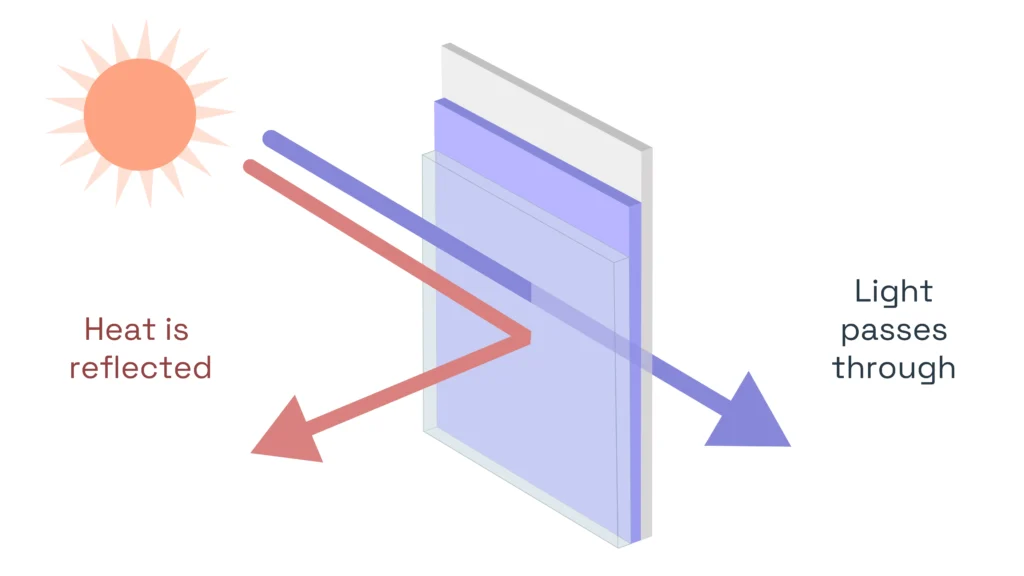
Simple climate guide
| Climate | Target U-factor | Target SHGC | Notes |
| Hot | Low | Low | Keep rooms cooler and protect finishes |
| Mixed | Low | Medium-low | Balance winter and summer |
| Cold | Low | Medium | Let winter sun help on south faces |
Glass options explained
- Low-E coatings: Reduce heat flow and glare.
- Gas fills: Argon is common; krypton helps thin gaps.
- Warm-edge spacers: Reduce edge condensation.
Tip: Use different SHGC by orientation if budget allows. South and west may need lower SHGC than north.
Does a 48×48 window meet egress code?
Sometimes. Egress rules care about the clear opening, not the unit label. A fixed 48×48 cannot meet egress. A casement might, if the sash opens wide enough. A double-hung likely fails because only half opens.
Check local code. Typical rules set a minimum clear width, height, and net clear area, plus a maximum sill height above the floor. Measure the actual opening with the window fully open before you rely on it for a bedroom.
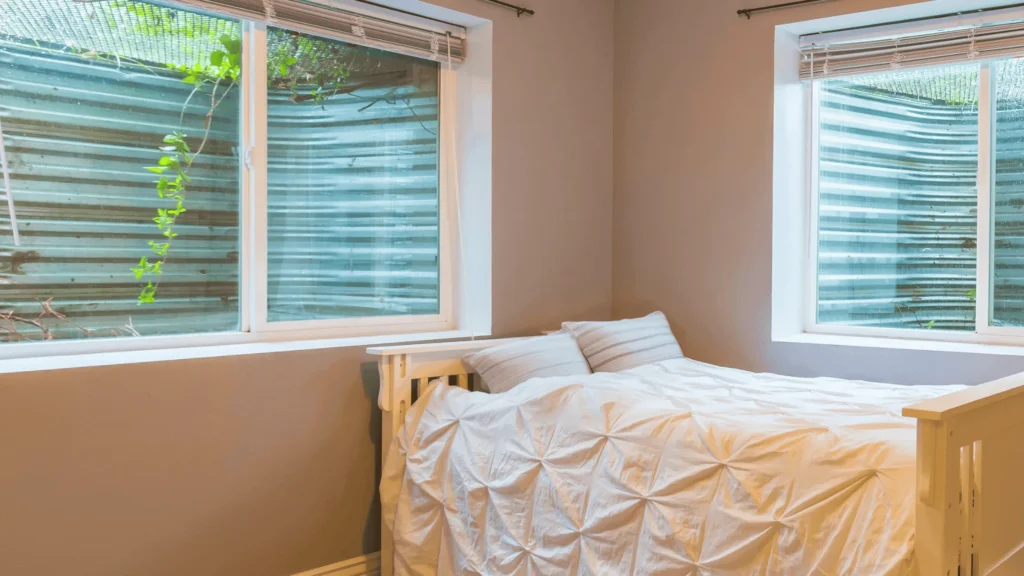
Egress checklist
- Confirm required clear width, height, area, and sill height.
- Avoid grilles that reduce clear opening.
- Ensure screens release quickly without tools.
- Verify window wells where required.
Planning notes
- Casements with egress hinges improve clear opening.
- Double-hung windows open only half the frame height.
- Ask for an egress data sheet for the exact model and size.
How long does 48×48 window installation take?
Simple replacements often take a few hours per window. New construction adds framing and flashing time. Tall walls, second stories, or repair work add more.
Plan for one visit to measure and one to install. Keep pathways clear. Protect floors and furniture. Ask who handles disposal and touch-up.
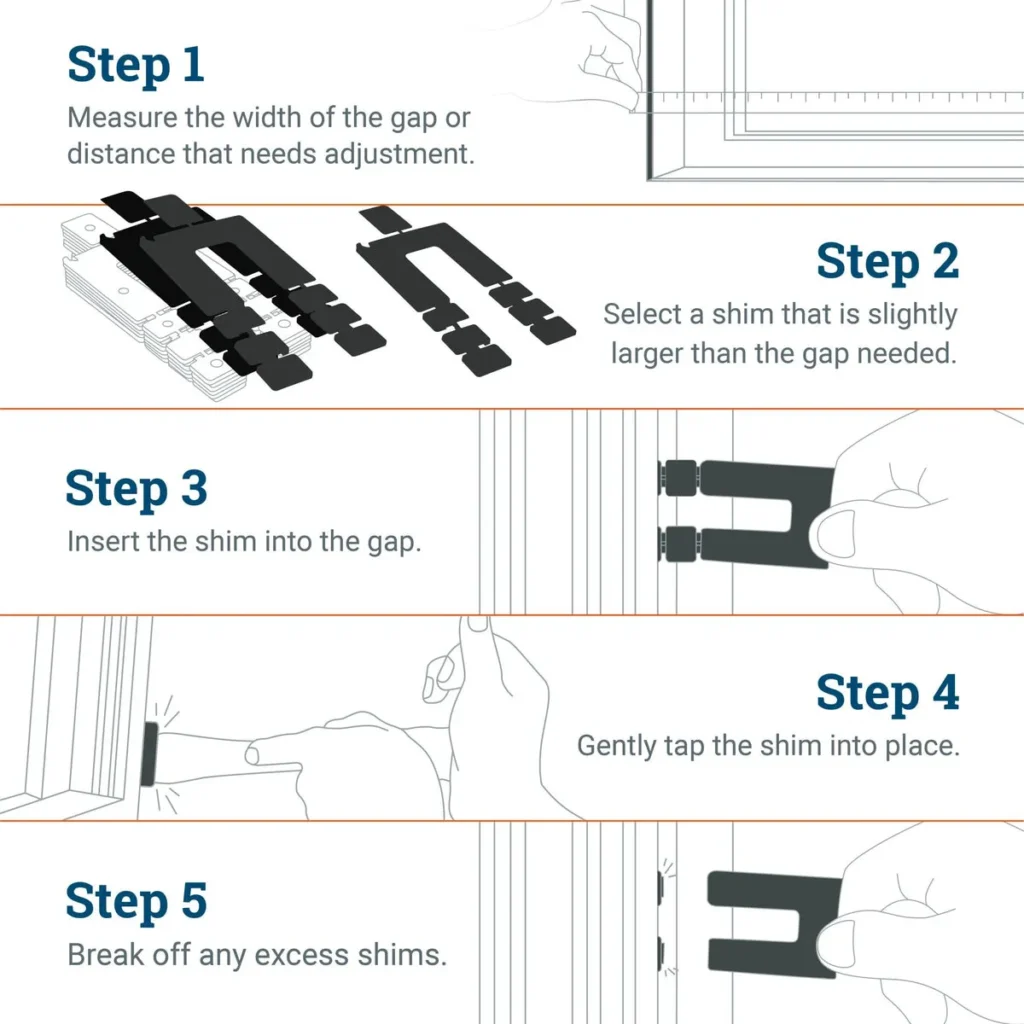
Typical timelines
| Project type | Time per window | Notes |
| Basic replacement | 2–4 hours | Existing frame is sound |
| Full-frame replacement | Half-day | New RO, flashing, trim |
| New construction | Varies | Framing, wrap, inspections |
Prep checklist
- Confirm swing/slide direction.
- Check measurements before ordering.
- Stage tools: shims, screws, pan, flashing tape, sealant.
- Inspect for rot and repair before setting the unit.
Conclusion
Name the size right. Confirm rough opening. Choose frame and glass for your climate and light. Plan install, seams, and sealing. Good choices now save money and stress later.
FAQ
What rough opening is needed for a 48×48 window?
Most use about ½ inch extra in width and height for shims and insulation. Always follow the manufacturer’s sheet for the exact rough opening dimensions.
Is 48×48 a standard replacement window size?
Often yes for slider and fixed units. Some casements and double-hung models also offer it. Availability, finishes, and lead times differ by supplier and region.
How much does it cost to replace a 4×4 window?
Budgets vary by frame, glass, and labor. Vinyl sliders tend to cost less than casements. Ask for a quote that separates unit, install, trim, and disposal.
Can a 48×48 window qualify for egress?
A fixed unit cannot. A casement might if the clear opening meets area and dimension rules. Double-hung units usually fall short because only half opens.
Which is better for heat: double-pane or triple-pane?
Triple-pane lowers U-factor but adds weight and cost. In very cold or noisy areas, it helps. In mild zones, good double-pane low-E often balances comfort and price.
Do black windows cost more in 2025?
Dark colors or laminates often add to the unit price. They may also have longer lead times. Confirm colorfastness and finish warranty before you order.
How long does window installation take?
Basic replacements can finish in a few hours per window. Full-frame swaps take longer. Second-story access and repairs add time. Ask for a schedule in writing.
What is the best frame for coastal areas?
Thermal-break aluminum or fiberglass with marine-rated finishes works well. Confirm fasteners and sealants for salt exposure. Rinse frames regularly to reduce corrosion.

